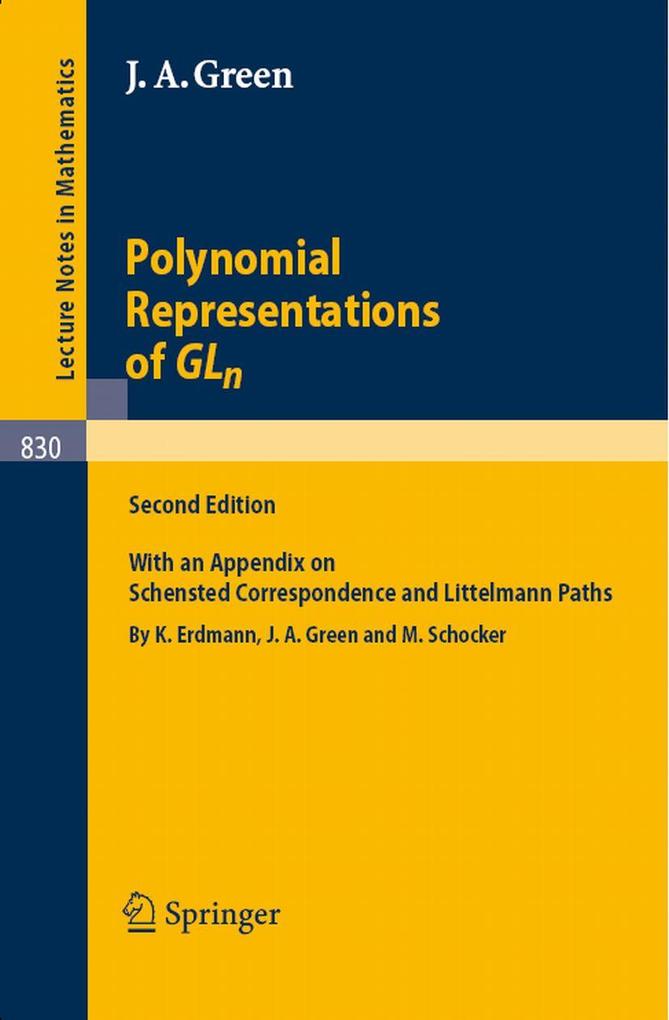This second edition of "Polynomial representations of GL (K)" consists of n two parts. The ? rst part is a corrected version of the original text, formatted A in LT X, and retaining the original numbering of sections, equations, etc. E The second is an Appendix, which is largely independent of the ? rst part, but whichleadstoanalgebraL(n, r), de? nedbyP. Littelmann, whichisanalogous to the Schur algebra S(n, r). It is hoped that, in the future, there will be a structure theory of L(n, r) rather like that which underlies the construction of Kac-Moody Lie algebras. We use two operators which act on "words". The ? rst of these is due to C. Schensted (1961). The second is due to Littelmann, and goes back to a1938paperbyG. deB. Robinsonontherepresentationsofa? nitesymmetric group. Littelmann'soperatorsformthebasisofhiselegantandpowerful"path model" of the representation theory of classical groups. In our Appendix we use Littelmann's theory only in its simplest case, i. e. for GL . n Essential to my plan was to establish two basic facts connecting the op- ations of Schensted and Littelmann. To these "facts", or rather conjectures, I gave the names Theorem A and Proposition B. Many examples suggested that these conjectures are true, and not particularly deep. But I could not prove either of them.
Inhaltsverzeichnis
Preface to the second edition. - J. A. Green: Polynomial representations of GLn: 1. Introduction. - 2. Polynomial representations of GL_n(K): The Schur algebra. - 3. Weights and characters. - 4. The module D_{\lambda, K}. - 5. The Carter-Lusztig modules V_{\lambda, K}. - 6. Representation theory of the symmetric group. - Appendix on Schensted correspondence and Littelmann paths by K. Erdmann, J. A. Green and M. Schocker: A. Introduction. - B. The Schensted process. - C. Schensted and Littelmann. - D. Theorem A and some of its consequences. - E. Tables. - Index of Symbols. - References. - Index.


































